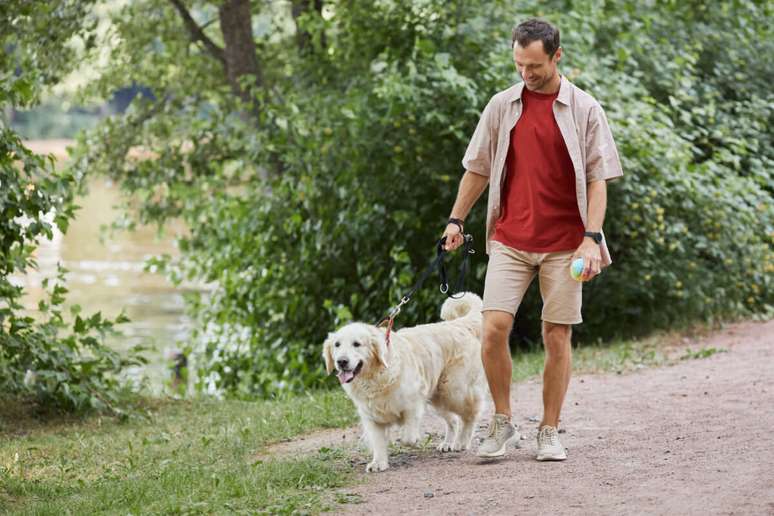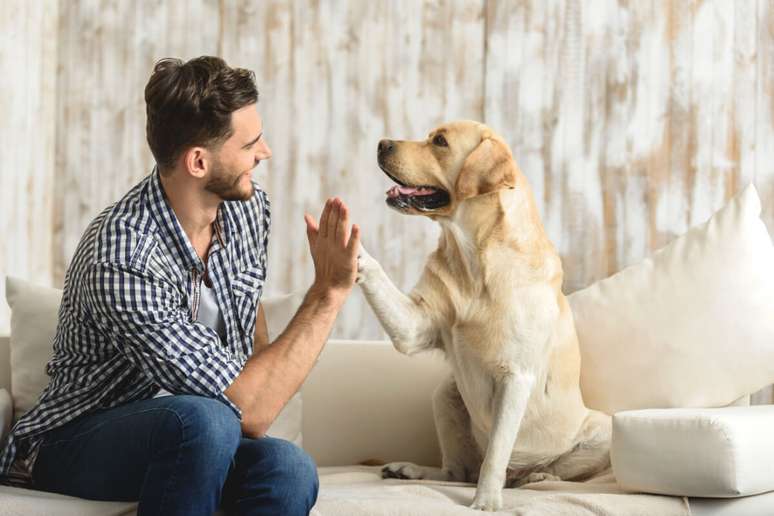Experts give tips to reduce animal stress when the owner leaves home
Separation anxiety in dogs is a behavioral disorder that occurs when the animal develops intense discomfort when left alone. It is a reaction of stress and discomfort caused by separation from the guardian or other family members.
“Dogs are social animals, they don’t feel very comfortable alone, some just don’t mind spending a good part of the day without someone else,” explains trainer Rafael Lola Cassanta.
Symptoms of separation anxiety
The most common symptoms include excessive vocalizations, such as persistent barking or howling, destruction of objects, especially near the entrance or exit of the house and, in more severe cases, self-destructive behavior. Furthermore, dogs with anxiety separation may show physical signs of stress, such as excessive salivation, tremors, and urination or defecation outside the appropriate place.
Dangers of this type of problem
Your dog’s mental health can directly affect his physical health. Veterinarian Mariana Paraventi explains that, in addition to skin lesions and ingestion of feces, “stress or anxiety cause an increase in cortisol and the release of adrenaline, which can be associated with a decrease in the immune system, tachycardia, increased blood pressure and gastrointestinal changes”.
Therefore, it is important to identify and address this problem with patience and proper training techniques to improve performance. quality of life of the animal and promote a more balanced and healthy relationship with their guardians. So, check out the ways to do it!
1. Establish a consistent routine
Dogs like predictability. A well-defined routine for feeding, walking and playing provides security for the animal. When the dog knows what to expect, he feels calmer.
“We make pets less anxious, less agitated, when their routine is maintained, when the animal knows what will happen and its needs are met. Any change in its daily life increases anxiety and, therefore, it becomes more agitated,” explains veterinarian Caroline Mouco Moretti.
2. Obedience training
Teach basic commands like “stay,” “sit,” and “down.” This not only builds trust between you and your dog, but also helps him understand what is expected of him, which can reduce anxiety when he is alone. Plus, as veterinarian Rammana Silva explains, basic training and commands help keep the animal centered and obedient.

3. Adequate walks and exercise
Dogs need regular exercise to expend energy and keep their minds active. Tours and jokes They help reduce anxiety, subsequently providing a feeling of relaxation.
“Socialization walks with humans and other animals are essential for mental health and occupy free time; on average, three times a day with an interval of 10-15 minutes,” adds Rammana Silva.
4. Gradually introduce solitude
Start with short absences and gradually increase the time cub stay alone. This helps you get used to the idea that you will return sooner or later.
“Start leaving him only for short periods. For example, leave him in one room with the door closed and go to the other. Wait a few seconds. If he doesn’t cry, reward him with a treat or affection,” recommends Rafael Lola Cassanta.
5. Avoid exaggerated farewells and arrivals
Keep goodbyes and arrivals calm and short. Exaggerated displays can create expectations and increase the dog’s anxiety about separation. Rafael Lola Cassanta recommends rewarding the animal by simply saying “very good” in a soft, calm tone of voice.
Source: Terra
Ben Stock is a lifestyle journalist and author at Gossipify. He writes about topics such as health, wellness, travel, food and home decor. He provides practical advice and inspiration to improve well-being, keeps readers up to date with latest lifestyle news and trends, known for his engaging writing style, in-depth analysis and unique perspectives.








